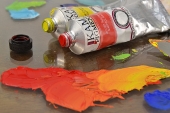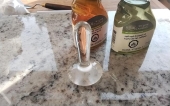
 9
9











 6
6




"The only thing...more expensive than education is ignorance."~Ben Franklin. "We can easily forgive a child who is afraid of the dark; the real tragedy of life is when men are afraid of the light." ~ Plato
 5
5




Invasive plants are Earth's way of insisting we notice her medicines. Stephen Herrod Buhner
Everyone learns what works by learning what doesn't work. Stephen Herrod Buhner
 2
2











 10
10




The mark of a true practitioner is not what arises in your life and mind, but how you work with what arises.
Dzigar Kongtrul Rinpoche, “The Path of Patience”
 4
4




The mark of a true practitioner is not what arises in your life and mind, but how you work with what arises.
Dzigar Kongtrul Rinpoche, “The Path of Patience”
 6
6




The mark of a true practitioner is not what arises in your life and mind, but how you work with what arises.
Dzigar Kongtrul Rinpoche, “The Path of Patience”

 4
4




Tradition is not the worship of ashes, but the preservation of fire.
 8
8




The mark of a true practitioner is not what arises in your life and mind, but how you work with what arises.
Dzigar Kongtrul Rinpoche, “The Path of Patience”
 3
3











 2
2




r ranson wrote:My Paul Ruben's Haiya oil pastels arrived. This is what triggered my desire to learn oil pastels - I found it for half price!
They are extremely soft and melted a bit on the way here.
I also bought some random "oil pastel paper" but didn't notice how small the size was (a5 and a 3.5" square)
So... um... can you help me get some courage to try these out? I'm very much stuck on the "oh, look at all the pretty things, I don't want to wreck them by using them" stage. I don't normally get stuck here so I don't know how to get unstuck.
"The only thing...more expensive than education is ignorance."~Ben Franklin. "We can easily forgive a child who is afraid of the dark; the real tragedy of life is when men are afraid of the light." ~ Plato
 7
7




 4
4











 7
7





The mark of a true practitioner is not what arises in your life and mind, but how you work with what arises.
Dzigar Kongtrul Rinpoche, “The Path of Patience”
 7
7












 3
3











 4
4




r ranson wrote:The problem so far is that the pastels melt with the heat of my hand. There must be some way to use that to my advantage.
I've heard that it's good to do the background with a cheaper and harder brand, then use these soft ones for the top layers. Anyone tried this?
The mark of a true practitioner is not what arises in your life and mind, but how you work with what arises.
Dzigar Kongtrul Rinpoche, “The Path of Patience”
 8
8












 3
3




r ranson wrote:It's like trying to draw with a stick of room temperature butter. Fun, but tricky.
It's a struggle but there is something here that has a lot of potential.
"The only thing...more expensive than education is ignorance."~Ben Franklin. "We can easily forgive a child who is afraid of the dark; the real tragedy of life is when men are afraid of the light." ~ Plato
 4
4




Carla Burke wrote:
r ranson wrote:It's like trying to draw with a stick of room temperature butter. Fun, but tricky.
It's a struggle but there is something here that has a lot of potential.
That is a PERFECT description! I love it, LOL! Now you get a much better idea of how it works, and can't start to really play with it! Blending will be so much fun!
The mark of a true practitioner is not what arises in your life and mind, but how you work with what arises.
Dzigar Kongtrul Rinpoche, “The Path of Patience”
 3
3











 4
4




by RubyTavi
Things I've learned:
put a background color in that is closest to the color you are going to want for each different color area. Rub it into the paper until there are no white spots. Then wipe off all the oil pastel with a paper towel. (A lighter shade will have stained the paper and won't wipe off.) Now you can start the actual painting and there won't be any white spots.
blend colors by rubbing them together gently with your finger or a paper towel. This works on the background color method above too. Test first on another piece of paper because you get different results depending on the order you apply the colors.
gentle is better. Too heavy a pressure just smears the oil pastel around and it doesn't stay where you want it or layer the way you want.
sometimes you have to let a layer dry (like for a week) before you can color over it the way you want.
you can get a smooth edge by smearing your finger slowly/gently along the edge.
you can get details and edges by scraping with a sharp point. (It's also really fun to layer dark colors over a lighter background color and then "draw" by scratching the dark color off with a sharp tip.)
oil pastels are hard to use. I have wiped all the pigment off and redone an area over and over and over. Near the end I usually start to get a feel for what kind of pressure or stroke will get the effect I want.







 8
8











 6
6











 4
4




"The only thing...more expensive than education is ignorance."~Ben Franklin. "We can easily forgive a child who is afraid of the dark; the real tragedy of life is when men are afraid of the light." ~ Plato
 11
11












 6
6




r ranson wrote:I got out the free oil pastels from the kids set in the video and yep. They are horrible to touch. Something in them burns my skin. They are awkward to use, like if crayons could go bad, this would be it. They also smell like rancid moter oil.
The new ones don't have a bad smell and don't hurt my skin.
Is the poor quality of kids oil pastels the reason it's not more popular?

 5
5




My son, looking at the chicken in the book, says, "That chicken looks cursed!"
My kids and I all agree, you did a great job drawing the chicken in the book... but book's chicken is an awful drawing. You did a fantastic job drawing an awful thing.
I almost wonder if a mixed media thing might be better? It's hard to try to draw a background after drawing the foreground. Maybe if the background was removed, or if you painted the background in watercolors and then drew the chicken in pastels, it would look better. It definitely looked better before you added the background. I've noticed that most of your chicken painting lack backgrounds, and they look great that way!
I also think it might work better for you to draw a picture of a real chicken, rather than a ridiculous book cartoon. The book cartoon isn't your style. You obviously have the ability to reproduce what you see, so maybe try reproducing a real chicken, rather than a funky cartoon chicken.
I think tutorials like the one in the book are meant for people who generalize what they see, not for people who's brains like to draw what they see. I think some people are good at having their brain's process what they see into a symbolic representation/caricature of what they see. Other peoples brains don't do that step of generalizing what they see, and do better at just drawing what they see.
Anyway, all that is to say, you did a great job using pastels. Maybe try drawing something realistic with them, before giving up on them?
 5
5




 4
4




Nicole Alderman wrote:
r ranson wrote:I got out the free oil pastels from the kids set in the video and yep. They are horrible to touch. Something in them burns my skin. They are awkward to use, like if crayons could go bad, this would be it. They also smell like rancid moter oil.
The new ones don't have a bad smell and don't hurt my skin.
Is the poor quality of kids oil pastels the reason it's not more popular?
I honestly think it's important to let kids use high-quality art materials, or at least "student-grade," rather than just Crayola (or, heaven forbid, RoseArt). I know they're more expensive than other art supplies, so maybe just bring them out for more important projects if you can't afford them to have the good stuff all the time (I can't). But, man, if we're frustrated coloring with subpar art, think what the kids are feeling when they don't even yet know WHY their art just isn't turning out the way they want.
 2
2




r ranson wrote:Here we are, my first four attempts with real oil pastels.

They aren't how I expected, but I'm really happy with the progress.
The hardest thing I find is the background. Getting it so the background recedes and the flower stands out is hard.

The mark of a true practitioner is not what arises in your life and mind, but how you work with what arises.
Dzigar Kongtrul Rinpoche, “The Path of Patience”
 4
4




S Adams
 4
4











 3
3











 5
5




The Filia oil crayons are very strong and resist breakage. Their square-shaped remains true to its retro design from 1952, and has a pointed tip allowing for outlining, defined contours, two-dimensional drawing and shading.
Filia oil crayons are highly pigmented and are produced in Denmark using only pure and natural ingredients. Their sustainable production process is eco-conscious and does not emit sewage, harmful emissions or hazardous waste.
Oil Crayons leave a clean, dry and smudge-resistant surface. They are strong and do not crumble easily. Paper wrappers are not necessary for these crayons so you are not obstructed at any time when they are coloring. Not as fragile as wax crayons, colors are brighter, resistant to softening or melting from sunlight. Blend easily to create different tones. The base of all these products consists of natural ingredients with approved colorants in compliance with all EU directives on Graphic instruments and Toy safety.
 4
4




r ranson wrote:I bought some Pentel Arts Oil Pastels and they arrived today. Opening them, I'm shocked by how badly they stink of motor oil. It's really nasty.
I'm scared to use them because of the smell, but they do have a 3rd party safe to use stamp on them... I'm confused.
So I looked up some reviews and it looks like the smell started circa 2021 (also when the texture changed). It's a common complaint now. I wish I had known that.
I'm toying with the idea of returning them the smell is that bad. But I'm leaving it out for a day to see if the smell dissipates.
 5
5













|
Ruth Stout was famous for gardening naked. Just like this tiny ad:
The new gardening playing cards kickstarter is now live!
https://www.kickstarter.com/projects/paulwheaton/garden-cards
|







